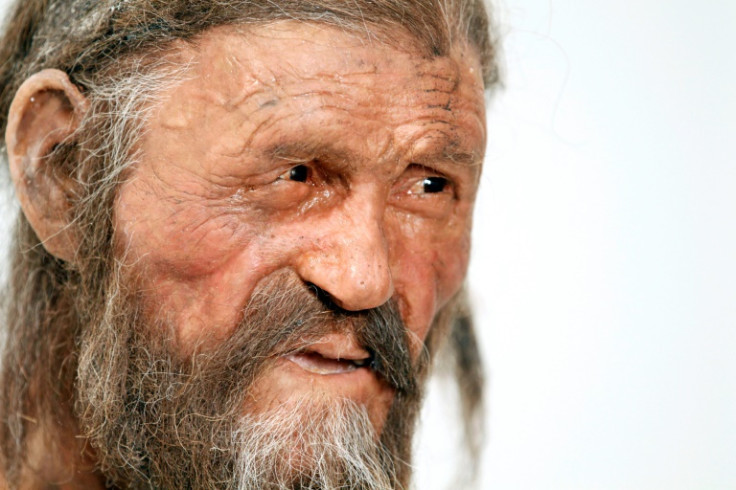Iceman Oetzi Was Balding, Darker-skinned Than Thought: Study

Oetzi, the "iceman" mummy of the Alps, had darker skin than previously thought and was likely bald or almost bald when he died, the study by Max Planck Institute for Evolutionary Anthropology said.
He also likely stemmed from a relatively isolated group with little contact with other Europeans, and had ancestors who arrived directly from Anatolia.
Oetzi's remains were found in September 1991 in South Tyrol, the northern Italian region where he was also believed to have roamed.
Mummified in ice, he was discovered by two German hikers in the Oetztal Alps, 3,210 metres (10,500 feet) above sea level, more than 5,000 years after his death.
Since then, scientists have used hi-tech, non-invasive diagnostics and genomic sequencing to penetrate his mysterious past.
Initial analysis of his genome had earlier suggested that he had genetic traces of steppe herders from eastern Europe.
But Max Planck's scientists said the latest results no longer support this finding.
Rather, they believed the original sample to have been contaminated with modern DNA that led to the erroneous finding.
Advances in technology have also allowed for a more specific look into Oetzi's past.
"Among the hundreds of early European people who lived at the same time as Oetzi and whose genomes are now available, Oetzi's genome has more ancestry in common with early Anatolian farmers than any of his European counterparts," said the institute's team.
Johannes Krause, head of the Department of Archaeogenetics at the Max Planck Institute for Evolutionary Anthropology who co-authored the study, said his team was "very surprised to find no traces of eastern European steppe herders in the most recent analysis of the Iceman genome".
"The proportion of hunter-gatherer genes in Oetzi's genome is also very low. Genetically, his ancestors seem to have arrived directly from Anatolia without mixing with hunter gatherer groups," he said.
The scientists believe therefore that he likely stemmed from a relatively isolated population that had very little contact with other European groups.
The team said previous ideas about the iceman's appearance may also have been inaccurate.
Scientists had previously thought the iceman's skin had darkened in the ice, but it may actually have been his original skin colour, said the team.
Oetzi's genes also show a "predisposition to baldness" and, rather than having long, thick hair on his head, he is now believed to already have lost most of his hair as an adult.
"This is a relatively clear result and could also explain why almost no hair was found on the mummy," said anthropologist Albert Zink, co-author of the study.
In previous studies over the years, scientists have determined that Oetzi died around the age of 45, was about 1.60 metres (five foot, three inches) tall and weighed 50 kilos (110 pounds).
He suffered a violent death, with an arrow severing a major blood vessel between the rib cage and the left shoulder blade.
© Copyright AFP 2024. All rights reserved.





















